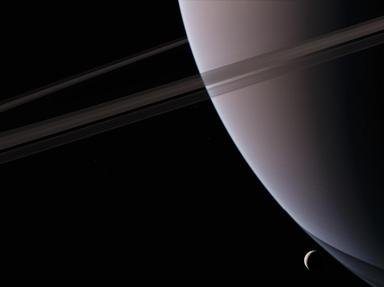27. The largest gap in Saturn's rings has been named after which European discoverer?
From Quiz One Saturn Deserves Another
Answer:
Gian Cassini
There are a lot of gaps in Saturn's rings though we would have struggled to have known this if it weren't for the space probes sent out into that region of space. Of the few that were observable/identifiable via telescopes the biggest gap was located between Saturn's Ring A and Ring B. This one is some 4,800 kilometres wide and has been named the Cassini Division. (Note: There is a Huygen's Gap at the inner edge of the Cassini Division but this is, at the most, only 400 kilometres wide.
So, why is this gap in there? First of all it is important to understand the make up of Saturn's rings. They are made up of a fairly complex series of ringlets which are, in turn, made up of countless bits of ice chunks. These chunks could be the size of dust particles to the size of a football oval. They have originated from pieces of debris from comets and shattered moons that have been broken up by Saturn's immensely powerful gravitational field, well before they could reach the planet. These particles are impacted upon by the gravitational pull of the nearby moons of Saturn. In the case of the Cassini Division, that moon is Mimas and it is Mimas that is responsible for pulling out any particles within that division, thus, leaving the gap.
The Italian born Cassini was an influential figure in the study of Saturn, though not all of his theories were on the mark. He discovered the gap between Rings A and B, identified that the rings were made, mainly, of frozen water and he felt that the rings may have been as old as the solar system, some 4.5 billion years old. The fly-bys of Voyager during the 1980s seemed to indicate that they could be as young as 100 million years old.






 = Top 5% Rated Quiz,
= Top 5% Rated Quiz,